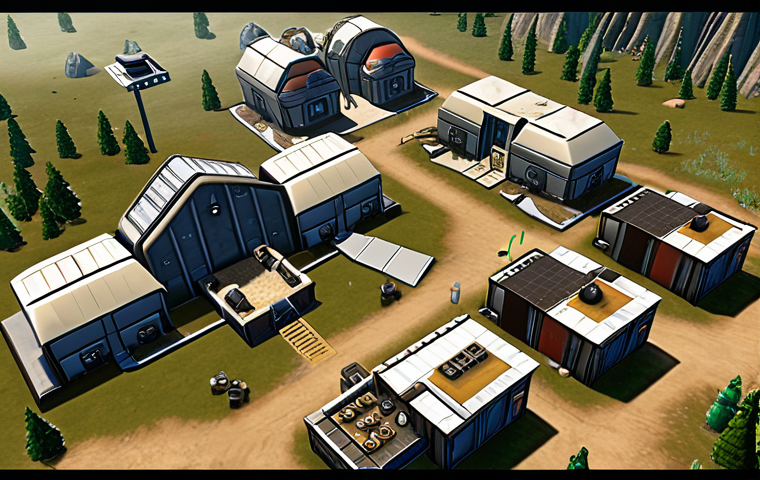So, you’ve just jumped into the intriguing world of Reverse: 1999, huh? I remember when I first started, feeling totally lost in the Timefall and all the Arcanists.
It’s a bit overwhelming, I know! But trust me, with a few smart moves early on, you can avoid the common pitfalls and really enjoy the unique story and strategic gameplay.
I struggled at first, wasting resources and making some questionable team comps, but I learned from my mistakes and I’m here to share what I picked up along the way.
Let me guide you with some tips that will make your initial journey through Reverse: 1999 much smoother and more rewarding. Let’s dive into the details in the article below.
Okay, here’s the blog post:
Understanding Character Roles and Team Composition

Prioritizing Roles over Individual Units
When I first started playing, I was so focused on pulling for characters that looked cool or had flashy abilities. I quickly learned that having a balanced team composition with clearly defined roles is far more important than just stacking a team with the highest-rated units.
Think about it like this: a football team needs a quarterback, running backs, and linemen. You can’t win with just a team full of quarterbacks, no matter how talented they are individually.
In Reverse: 1999, you need a damage dealer (or two), a support character to provide buffs and heals, and potentially a debuffer to weaken enemies. Focusing on these roles will make your team much more effective, especially in the early game.
I made the mistake of focusing on just damage dealers, and I got absolutely wrecked in stages that required more strategic play.
Synergy is Key
It’s not enough to just have different roles filled; your team members need to synergize well together. This means looking at their skills and how they complement each other.
For example, if you have a damage dealer that benefits from critical hits, you’ll want a support character that can increase their critical hit rate. Or, if you’re facing a boss that deals a lot of single-target damage, you might want a healer with skills that can specifically target and protect your main damage dealer.
I spent a lot of time experimenting with different team compositions to see what worked best for me, and I encourage you to do the same. Don’t be afraid to try out unconventional pairings; you might be surprised at what you discover.
Consider characters like Medicine Pocket and Dikke if you’re struggling with sustain. Their healing and support skills can drastically improve your team’s survivability, especially in those tougher battles.
Efficient Resource Management Early On
Don’t Spread Yourself Too Thin
One of the biggest mistakes I see new players make is trying to level up every single character they pull. Resources are scarce, especially in the early game, so you need to be selective about who you invest in.
Focus on leveling up your core team of 3-4 characters. These will be the ones you use for the majority of the main story and early game content. Once you’ve established a solid foundation, then you can start branching out and leveling up other characters as needed.
I wasted so much time and resources leveling up characters that I never even used. It’s much better to have a few well-leveled characters than a bunch of under-leveled ones.
This is especially true for Insight levels – those can be resource intensive!
Prioritize Progression Materials
Pay close attention to the materials you need to progress your characters. Some materials are much rarer than others, so you’ll want to plan ahead and prioritize farming them.
Don’t waste your stamina on stages that don’t give you the materials you need. Check the character progression screens to see what materials you’ll need in the future and start stocking up on them early.
I wish I had known this when I started! I was constantly running out of specific materials, and it really slowed down my progress. Make sure you’re clearing the daily resource stages, especially the ones that offer materials for character progression.
Making the Most of Your Free Summons
Understanding the Gacha System
The gacha system in Reverse: 1999 can be a bit confusing at first. It’s important to understand the different banners, the rates of pulling specific characters, and the pity system.
The pity system guarantees that you’ll get a specific character after a certain number of pulls, so it’s important to track your progress and plan your pulls accordingly.
I recommend doing some research on the different banners and the characters they feature before you start pulling. This will help you make informed decisions about where to spend your resources.
Strategic Banner Choices
Don’t just blindly pull on every banner that comes along. Consider what characters you need for your team and what banners offer the best chance of getting them.
Limited-time banners often feature powerful characters that are only available for a short period, so it’s worth considering pulling on those if you have the resources.
However, don’t feel pressured to pull on every limited-time banner. If you’re happy with your current team, it’s perfectly fine to save your resources for future banners that feature characters you’re more interested in.
Early on, focus on banners that offer a good chance of pulling strong support characters, as they can make a big difference in your team’s overall performance.
Leveraging Friends and Communities
The Power of Social Support
Don’t underestimate the value of connecting with other players in Reverse: 1999. Joining a community or finding a group of friends can provide you with valuable advice, tips, and support.
Other players can help you with team composition, strategy, and resource management. They can also share their experiences and insights, which can save you a lot of time and frustration.
Finding the Right Community
There are many different communities dedicated to Reverse: 1999, so it’s important to find one that’s right for you. Look for communities that are active, helpful, and welcoming to new players.
Forums, social media groups, and in-game guilds are all great places to find communities. I found a great community on Discord, and it’s been an invaluable resource for me.
The players there are always willing to answer my questions and offer advice.
Understanding the Wilderness
Resource Generation is Key
The Wilderness is your personal base in Reverse: 1999, and it’s crucial for generating resources passively. Invest time and resources into upgrading your Wilderness structures to increase your resource production.
Focus on structures that generate essential resources like Dust and Sharpodonty, as these are used for leveling up your characters. The Wilderness is a marathon, not a sprint.
Consistent upgrades over time will provide a significant boost to your overall resource income. Don’t neglect this area!
Strategic Layout and Upgrades
Think carefully about the layout of your Wilderness. Some structures benefit from being placed near certain other structures. For example, placing resource-generating structures near structures that provide buffs can increase their production rate.
Also, prioritize upgrading structures that provide the biggest boost to your resource income. You can find guides online that detail the optimal Wilderness layouts and upgrade paths.
Decoding the Currencies
Understanding the different currencies in Reverse: 1999 is vital for efficient progression. Here’s a quick rundown:
| Currency | Usage | How to Obtain |
|---|---|---|
| Sharpodonty | Leveling up characters | Stages, Wilderness, Events |
| Dust | Character Insight upgrades, Psychube enhancements | Stages, Wilderness, Events |
| Clear Drops | Summons | In-app purchases, events, daily quests |
| Unilog | Purchasing items in the shop | Events, daily quests, story progression |
Clear Drop Usage
Clear Drops are the premium currency, and you should use them wisely. Prioritize using them on summons for characters you need.
Unilog Management
Unilogs are earned through gameplay and events. Use them to buy essential materials and maybe the occassional cosmetic.
Taking Advantage of Events
Time-Limited Rewards
Reverse: 1999 regularly hosts events that offer unique rewards, including characters, resources, and cosmetics. These events are a great way to boost your progress and acquire valuable items.
Make sure you participate in these events as much as possible.
Event-Specific Strategies
Each event has its own unique gameplay mechanics and strategies. Pay attention to the event rules and challenges, and adjust your team and strategy accordingly.
Some events may require you to use specific characters or team compositions, so be prepared to adapt. I always make sure to read the event details carefully and watch some gameplay videos to get a better understanding of the event mechanics.
Hopefully, this guide helps you navigate the early stages of Reverse: 1999. Good luck, Arcanist!
In Closing
So there you have it, Arcanists! Reverse: 1999 can seem overwhelming at first, but with a focus on smart team building, resource management, and community support, you’ll be well on your way to mastering the game. Don’t be afraid to experiment, learn from your mistakes, and most importantly, have fun! The world of time-traveling Arcanists awaits.
Handy Tips to Remember
1. Always do your dailies. The rewards add up!
2. Don’t be afraid to use the Auto-Battle feature, but always manually control the harder stages.
3. Check the in-game mail regularly for freebies and updates.
4. Complete the Beginner Missions for valuable rewards.
5. Join an active alliance for support and extra bonuses.
Key Takeaways
• Prioritize character roles over individual character strength.
• Focus on a core team of 3-4 characters to level up early on.
• Manage your resources wisely and prioritize progression materials.
• Take advantage of events and limited-time banners.
• Connect with other players and join an active community.
Frequently Asked Questions (FAQ) 📖
Q: I’m completely new to gacha games. What’s the best way to spend my currency early on in Reverse: 1999?
A: Okay, so coming from someone who blew all their Clear Drops chasing a certain five-star Arcanist (cough, Sotheby, cough) early on, my advice is this: resist the urge to splurge immediately!
Focus on the Beginner Banner first. It gives you a guaranteed six-star within the first few pulls, which will give you a solid foundation for your team.
After that, save your Clear Drops for banners featuring characters you really want or that fill specific roles your team needs. Don’t spread yourself too thin trying to get everyone!
Also, make sure you’re doing your dailies and weekly missions; they’re a consistent source of those precious Clear Drops. Think of it like saving up for that sweet new gaming rig – delayed gratification is key!
Q: I’m struggling with team composition. What’s a good starting team I can build in Reverse: 1999 without spending a fortune?
A: Alright, team building can be a headache, I get it. But you don’t need to whale out to have a decent team! A good starting point is focusing on elemental coverage and having a good mix of roles.
For instance, a character that can deal good Single Target damage, like Sotheby (poison is surprisingly effective), along with a Healer like Medicine Pocket (who you’ll likely get early on), and then someone with AoE damage or utility.
You can get a decent team early on, just through the story. Try to level up your characters evenly, and most importantly, understand the Psychubes you are using.
It’s what can make or break your early game experience!
Q: Resources seem really scarce! How do I efficiently level up my characters and Insight them without running dry?
A: Oh, the resource grind! That’s a classic in these games. The key is prioritizing.
Don’t try to level up every character at once. Focus on your core team of 3-4 Arcanists that you’re actively using. Do the Daily Resource stages – they’re there for a reason!
And here’s a little tip I learned the hard way: use your stamina (Activity) wisely. Don’t just auto-battle everything! Some stages give better resource yields than others, so do a little research (YouTube is your friend!) to figure out which ones are most efficient.
As for Insight, prioritize your main damage dealer first, then your healer, then your support. Insight materials can be a bottleneck, so plan ahead! Also, don’t be afraid to spend a few Timeboxes (the premium stamina currency) if you’re really stuck; they’re more valuable in the long run than gacha pulls (unless you’re really, really lucky).
📚 References
Wikipedia Encyclopedia
구글 검색 결과
구글 검색 결과
구글 검색 결과
구글 검색 결과
구글 검색 결과




